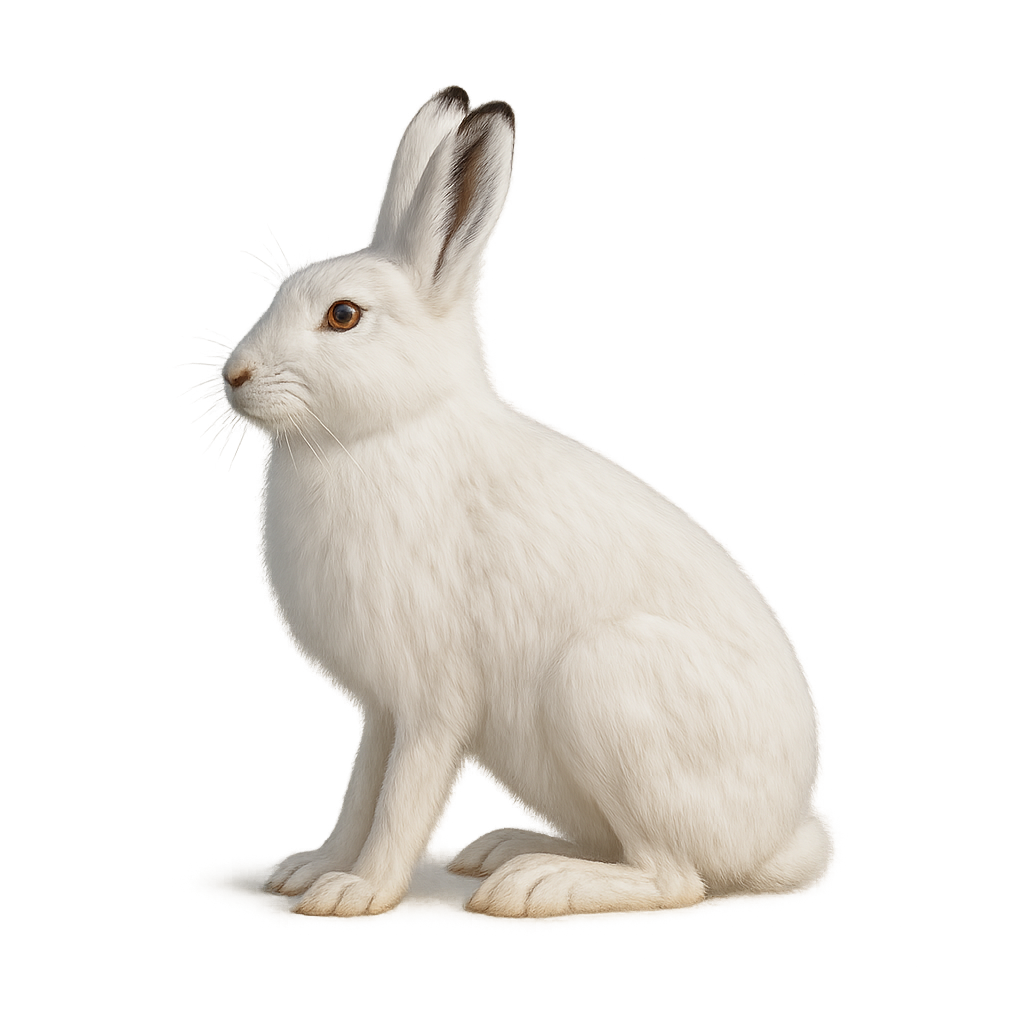Your wildlife photography guide.
Explore the mountain hare in detail, study its behavior, prepare your shots.
Where to observe and photograph the mountain hare in the wild
Learn where and when to spot the mountain hare in the wild, how to identify the species based on distinctive features, and what natural environments it inhabits. The WildlifePhotographer app offers tailored photography tips that reflect the mountain hare’s behavior, helping you capture better wildlife images. Explore the full species profile for key information including description, habitat, active periods, and approach techniques.
Mountain Hare
Scientific name: Lepus timidus

IUCN Status: Least Concern
Family: LEPORIDAE
Group: Mammals
Sensitivity to human approach: Suspicious
Minimum approach distance: 30 m
Rut period: March to July
Gestation: 48-52 jours
Births: May to September
Habitat:
Open areas, meadows, and temperate forests
Activity period :
Mainly active at night, generally discreet during the day.
Identification and description:
The Mountain Hare is a small mammal, easily recognizable for its ability to change color according to the seasons. In winter, its coat becomes completely white, allowing it to blend perfectly into the snow, while in summer, it has a brown or gray coat, with darker shades on its back and lighter hues on its belly. It measures about 50 to 70 cm in length, with a tail of 6 to 8 cm, and weighs between 2 and 4 kg. The Mountain Hare is primarily found in the cold, mountainous regions of Northern Europe, Northern Asia, and certain mountainous areas of North America. It is a herbivorous animal that feeds on a variety of vegetation, primarily grasses, roots, fruits, and young shoots. It is mainly active at dusk and during the night, hiding in bushes or under grasses during the day. Although it is quite resilient to cold temperatures, the species is threatened by habitat loss and climate changes affecting its natural environment.
Recommended lens:
400 mm – adjust based on distance, desired framing (portrait or habitat), and approach conditions.
Photography tips:
Use a telephoto lens to photograph at a distance, respecting the discreet nature of the species.
Photograph early in the morning or late in the afternoon, when the soft light enhances the fur of the mountain hare, especially when it changes color in winter.
Look for it in mountain habitats, such as snow-covered areas, tundra, and mountain forests, at high altitudes.
Be patient and discreet to avoid disturbing its natural behavior. Avoid sudden movements and remain silent.
The Mountain Hare is sensitive to climate change, which reduces its available habitat in the mountains. It is classified as a species of minor concern by the IUCN. It is essential to respect its environment and minimize disturbances, especially during the breeding season.
The WildlifePhotographer App is coming soon!
Be the first to explore the best nature spots, track rutting seasons, log your observations, and observe more wildlife.
Already 1 439 wildlife lovers subscribed worldwide

